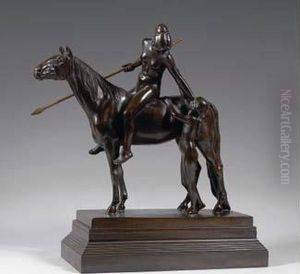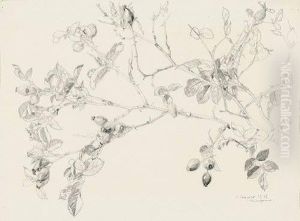Hermann Haase Paintings
Hermann Haase was a German sculptor and medalist born on May 31, 1882, in Iserlohn, which was then part of the Prussian Province of Westphalia. His artistic career unfolded during a period of significant social and political change in Germany, spanning the late 19th century, through the Weimar Republic, the Nazi era, and post-World War II reconstruction.
Haase studied sculpture under the guidance of distinguished artists at the time. He attended the Academy of Fine Arts in Munich, where he was likely influenced by Art Nouveau and the Jugendstil movement, which were prominent in Germany at the turn of the century. His early work often reflected the aesthetics of these movements, with a focus on the human form and a tendency toward ornamental design.
During his career, Haase became known for his commemorative medals, plaques, and sculptures. His works were often characterized by a blend of classical motifs and contemporary stylization. He received various commissions for public monuments and memorials, which solidified his reputation as a skilled sculptor. Haase's medals in particular were recognized for their craftsmanship and detailed relief work.
The political climate of Germany during Haase's lifetime had a significant impact on his career. Under the Nazi regime, many artists faced restrictions or were coerced into creating propaganda. It is unclear to what extent Haase was involved with the art of the Third Reich, but like many of his contemporaries, he would have been subject to the cultural policies in place.
After World War II, Germany's art scene underwent a process of re-evaluation and renewal, grappling with the recent past and seeking new directions. Haase, having lived through two World Wars, continued to produce art in the post-war period. His later works would reflect a shift in public memory and sentiment, as Germany dealt with the legacy of the conflict and the Holocaust.
Hermann Haase died on April 5, 1965, in Munich. His life and work remain a testament to the complex interplay between art and the tumultuous political landscapes of the 20th century. While not as widely known today as some of his contemporaries, Haase's contributions to sculpture and medal-making are nonetheless an important part of German art history.

